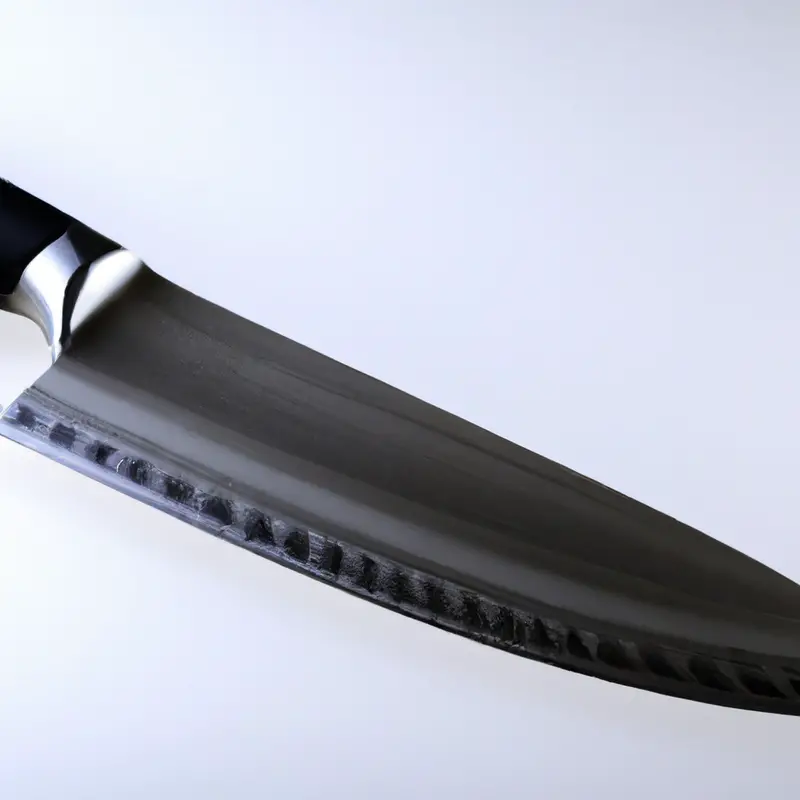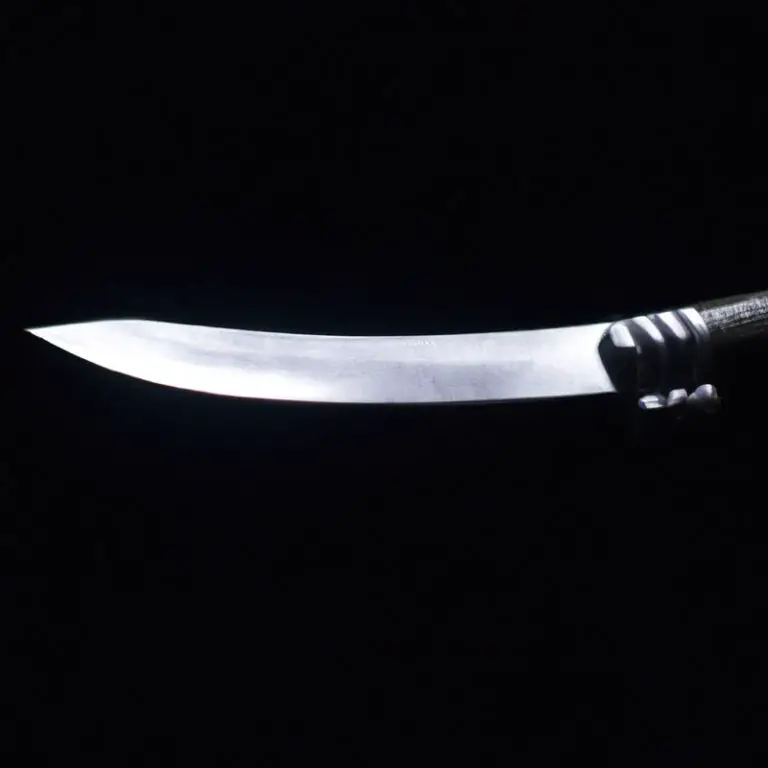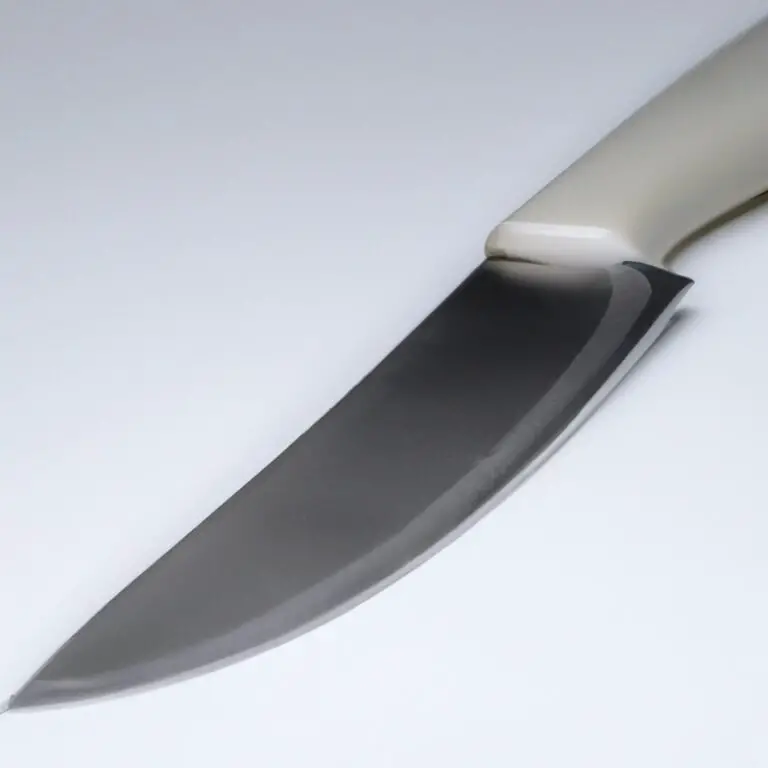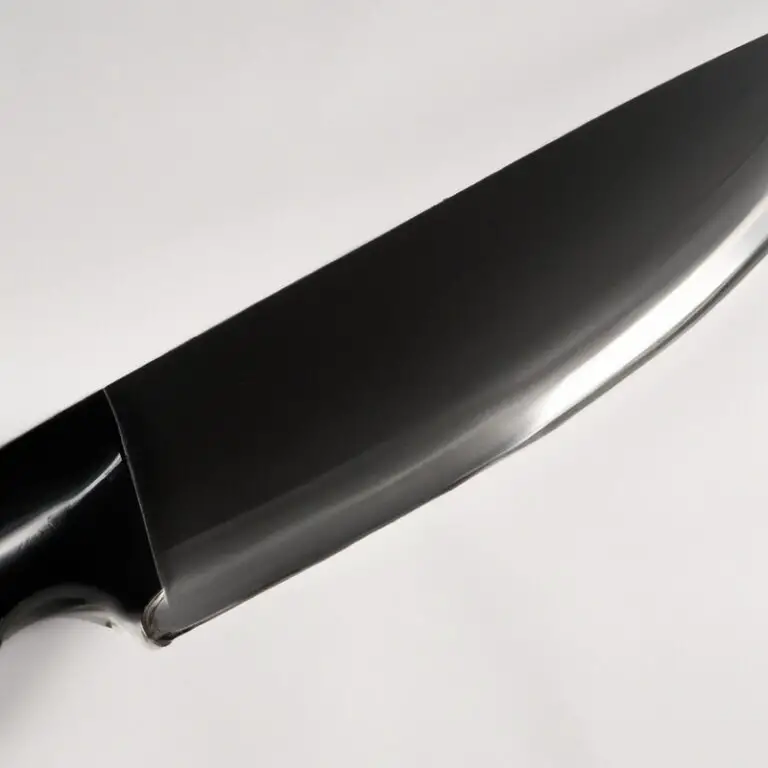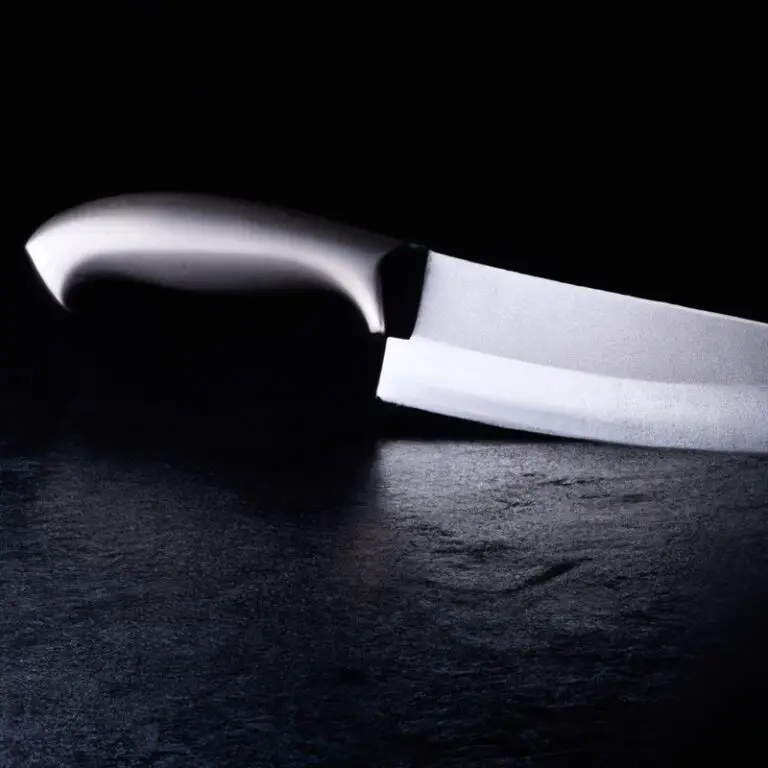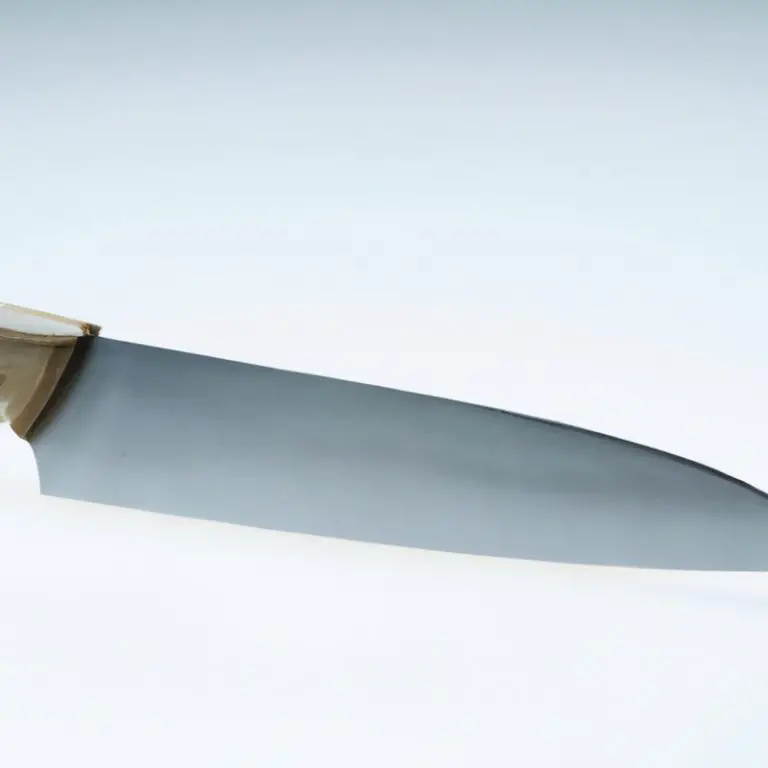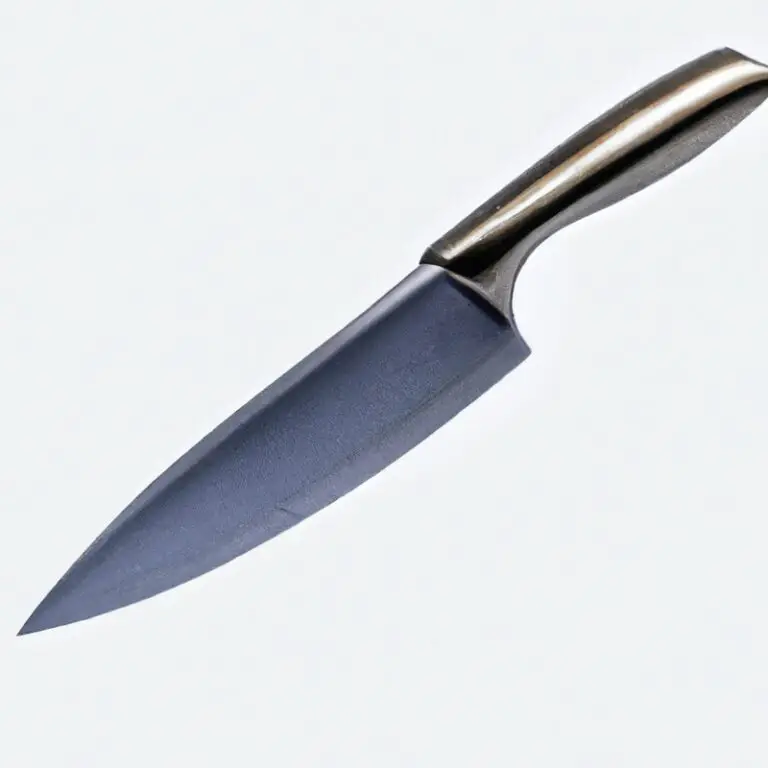How To Choose a Santoku Knife? – Expert Tips
Key Takeaways:
- Look for a comfortable handle that provides a secure grip to prevent slippage or injury during use.
- Consider the blade material and its ability to retain sharpness, balance, and durability for long-term use.
- Choose a knife with a properly angled and shaped blade, which enhances versatility and allows for precise cutting and slicing.
- Invest in a knife that meets your specific needs and aligns with your budget, while also providing reliable performance and quality.
Are you on the hunt for the perfect knife to enhance your kitchen game? Look no further than the Santoku knife.
This versatile Japanese knife has become a staple in many kitchens for its ability to slice, chop, and dice with ease.
But with so many options available, it can be overwhelming to choose the right one. In this comprehensive guide, I will walk you through the types of Santoku knives, blade and handle materials, size considerations, and more to help you make the best decision for your needs and budget.
Plus, I’ll provide tips for maintaining and caring for your new kitchen essential.
| Criteria | Considerations |
|---|---|
| Blade Material | Stainless steel or high carbon steel? |
| Blade Length | Which length suits your needs best? |
| Blade Shape | Straight or curved? |
| Blade Thickness | How thick or thin should the blade be? |
| Blade Grind | Full, hollow, or flat? |
| Handle Material | Wood, plastic, stainless steel, or other? |
| Handle Shape and Size | What fits your grip and hand size? |
| Weight and Balance | What feels comfortable and well-balanced? |
| Price | What is your budget range? |
| Brand and Reputation | What are the reviews and ratings for the brand and specific model? |
Understanding Santoku Knives: A Comprehensive Guide
Understanding Santoku Knives: A Comprehensive Guide Santoku knives are Japanese-style knives with a shorter and wider blade than traditional western knives. They offer versatility, making them ideal for chopping, slicing, and mincing vegetables, fruits, and meat.
Knowing the different types of Santoku knives and their uses is essential when choosing the right knife for your needs.
Santoku knives can have different blade materials such as stainless steel, carbon steel, or Damascus steel. Each material has its unique benefits and drawbacks, so it’s crucial to consider your preferences and budget.
Tang refers to part of the blade that extends into the handle.
The tang’s length and materials used impact the knife’s balance and durability. Full tang knives offer better balance and durability than partial tang knives.
The handle material and design also play a significant role in comfort and grip.
Popular handle materials include wood, plastic, and metal. A comfortable grip reduces hand fatigue and ensures safety when using the knife.
When choosing the right size Santoku knife, consider the blade length and width.
The ideal size should fit well in your hand and offer enough space for effective cutting. Santoku knives are available in single or double beveled edges.
A single beveled edge offers better precision, while a double beveled edge is easier to maintain.
Choose the one that best suits your needs. Weight distribution is another vital factor to consider.
A well-balanced knife ensures maximum control and reduces wrist fatigue.
Lastly, it’s important to choose a Santoku knife that fits within your budget. High-end knives with quality materials can be expensive, but there are affordable options that offer excellent performance.
Proper maintenance and care for your Santoku knife ensure that it stays sharp and lasts longer.
Regular sharpening and cleaning are crucial to keep it in top shape. Knowing what to consider when choosing a Santoku knife is essential to make an informed decision.
With this guide, you can now confidently choose the best Santoku knife for your cooking needs.
Types of Santoku knives and Their Uses
There are three types of Santoku knives:
- Traditional Japanese Santoku knife – this is the original version of the knife, with a shorter blade and a pointed tip. It is ideal for chopping, dicing, and slicing smaller vegetables and fruits.
- Western-style Santoku knife – this knife has a longer blade and a curved edge, making it more versatile for handling larger ingredients. It is suitable for slicing meat and fish, as well as vegetables and fruits.
- Granton-edge Santoku knife – this knife has a series of small scalloped indentations on the blade, which helps reduce friction and prevent food from sticking to the surface. It is useful for slicing thinly and creating smooth cuts.
Before choosing a Santoku knife, consider what type of food you will be preparing frequently and the size of the ingredients. This will help determine which type of Santoku knife is best suited to your needs.
Blade Materials to Consider When Choosing a Santoku Knife
When choosing a Santoku knife, the blade materials are an essential consideration. Santoku knives are typically made using high-carbon stainless steel, VG-10 steel, or Damascus steel.
High-carbon stainless steel is a popular choice because it combines the durability of carbon steel with the rust resistance of stainless steel.
It holds a sharp edge, and it is easy to sharpen. VG-10 steel is another high-quality option that is highly regarded for its sharpness and edge retention.
Damascus steel is a traditional Japanese steel that is known for its unique and intricate patterns.
It is made by layering different types of steel together, creating a strong, durable blade with a beautiful, artistic finish. Ultimately, the best blade material for your Santoku knife will depend on your personal preferences and needs.
Consider factors such as durability, sharpness, edge retention, and aesthetic appeal when making your decision.
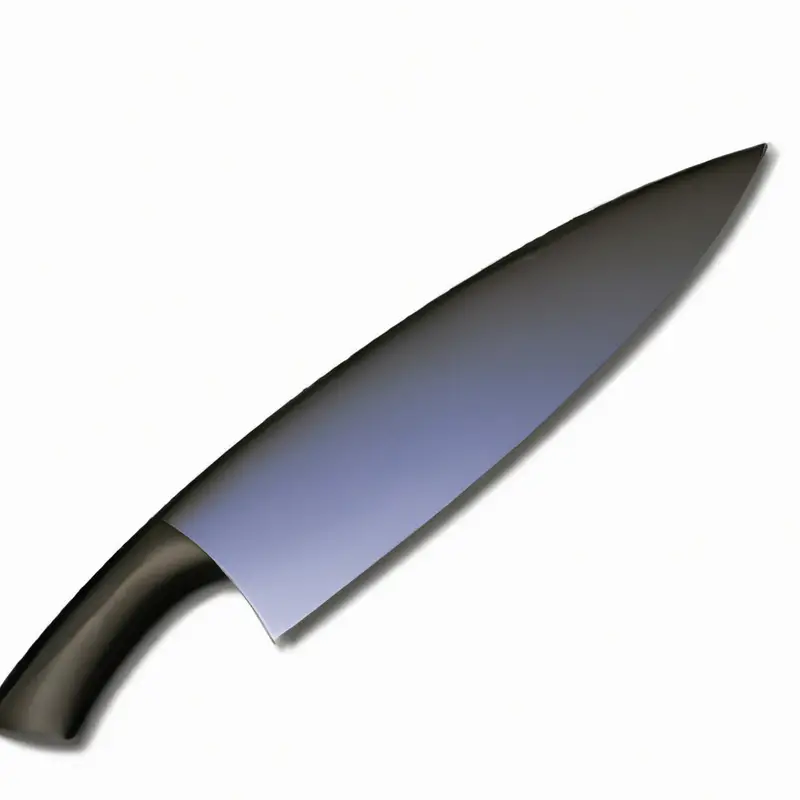
The Importance of Tang in a Santoku Knife
The tang of a Santoku knife refers to the part of the blade that extends into the handle. It provides balance, stability, and strength to the knife.
A tang that runs the full length of the handle, or a full tang, is considered the most desirable because it ensures a sturdy and durable knife.
A full tang also provides better control and precision when cutting as it adds weight to the handle, allowing for a better grip and handling experience. The weight distribution in a knife with a full tang ensures the blade remains steady and balanced, reducing the risk of injury or accidents.
On the other hand, a partial tang or a knife with a handle that only covers a portion of the tang is less sturdy, and the handle may loosen or crack over time.
These knives are also more likely to be unbalanced, leading to difficulties in handling and inaccurate cuts. Therefore, when choosing a Santoku knife, it is essential to prioritize the tang.
It is best to select a knife with a full tang for optimal balance, stability, and precision in the kitchen.
Handle Materials and Design for Comfort and Grip
Handle Materials and Design for Comfort and Grip are crucial factors to consider when choosing a Santoku knife. The handle should have a comfortable grip to avoid slips and ensure maximum control.
Common materials used for Santoku knife handles include wood, plastic, stainless steel, and carbon fiber.
Wood handles, such as walnut and ebony, are aesthetically pleasing and provide a comfortable grip, but require special care. Plastic handles are lightweight, easy to clean, and affordable.
Stainless steel handles are durable and stylish but can be slippery.
Carbon fiber handles are lightweight and provide a comfortable grip, but they are expensive. Ensure that the handle is balanced with the blade for optimal control and comfort.
Additionally, the handle should have a secure grip, such as a textured or contoured design, to prevent slipping.
Finding the Right Size Santoku Knife for Your Needs
Choosing the right size Santoku knife can greatly affect your comfort and effectiveness in the kitchen. The typical blade length for Santoku knives ranges from 5 to 7 inches, with some going up to 9 or 10 inches.
When selecting a size, consider your hand size and the types of tasks you will be using the knife for.
If you have larger hands or will be using the knife for heavier tasks such as chopping through larger vegetables or meats, a longer blade length may be more suitable for you. However, for more precise tasks such as slicing smaller vegetables or seafood, a shorter blade length may be more appropriate.
It’s important to note that the size of the blade also affects the weight and balance of the knife, which can impact your control over the knife.
Take some time to experiment with different blade sizes to find which one feels most comfortable and efficient for you. Overall, finding the right size Santoku knife for your needs is crucial for a successful and enjoyable cooking experience.
Choosing Between a Single- or Double-Beveled Edge
When choosing a Santoku knife, one important decision to make is whether to opt for a single- or double-beveled edge. A single-beveled edge, also known as a chisel edge, is sharpened only on one side.
This type of edge is typically found on traditional Japanese knives and offers a sharp, precise cutting edge that’s ideal for delicate tasks such as slicing sushi and sashimi.
However, it can be challenging to sharpen, and the blade can be more prone to chipping. On the other hand, a double-beveled edge, also known as a V-edge, is sharpened on both sides.
This is the more common type of edge found on Western knives and provides a more versatile cutting edge that can handle a wider range of tasks.
Double-beveled knives are generally easier to sharpen and maintain. Ultimately, the choice between a single- or double-beveled edge comes down to personal preference and the type of tasks you plan to use your Santoku knife for.
If you primarily cook Japanese cuisine and require precise cuts, a single-beveled edge might be the better option.
However, if you want a knife that’s versatile enough to handle a range of tasks, a double-beveled edge is likely the way to go.
Why Weight Distribution Matters in a Santoku Knife
Weight distribution is a crucial factor to consider when choosing a Santoku knife. The weight should be evenly distributed between the blade and handle to provide a balanced and comfortable grip during use.
A well-balanced knife allows for better control and precision, reduces the risk of wrist fatigue, and ensures a more efficient cutting experience.
A heavy blade can cause the knife to feel unwieldy and require more effort to use, while a handle-heavy knife may cause the blade to lose contact with the cutting board. To find a well-balanced Santoku knife, look for ones with a full tang and a handle that fits comfortably in your hand.
In summary, weight distribution plays a crucial role in the performance and comfort of a Santoku knife.
Choose a knife with even weight distribution to ensure a balanced and easier cutting experience.
How to Choose the Best Santoku Knife for Your Budget
When choosing a Santoku knife that fits your budget, there are some essential things to consider. Firstly, consider the materials used in the knife’s production.
High-quality materials like stainless steel and carbon materials are more durable and long-lasting but may come at a higher price point.
You can always opt for lower-priced options that still offer decent quality. Next, the handle design and material of the knife should be comfortable and easy to grip.
You also need to consider the weight distribution of the knife.
A well-balanced knife with evenly distributed weight reduces fatigue and ensures precision cutting. The size of the knife should also match your needs.
Before making any purchase, ensure that the knife provides sufficient cutting length for your intended use.
Finally, you must take care of the knife. Proper maintenance ensures the longevity of the knife.
Clean it after every use and store it in a dry place to avoid rusting.
With all these factors in mind, you can find the best Santoku knife that meets your budget and needs.
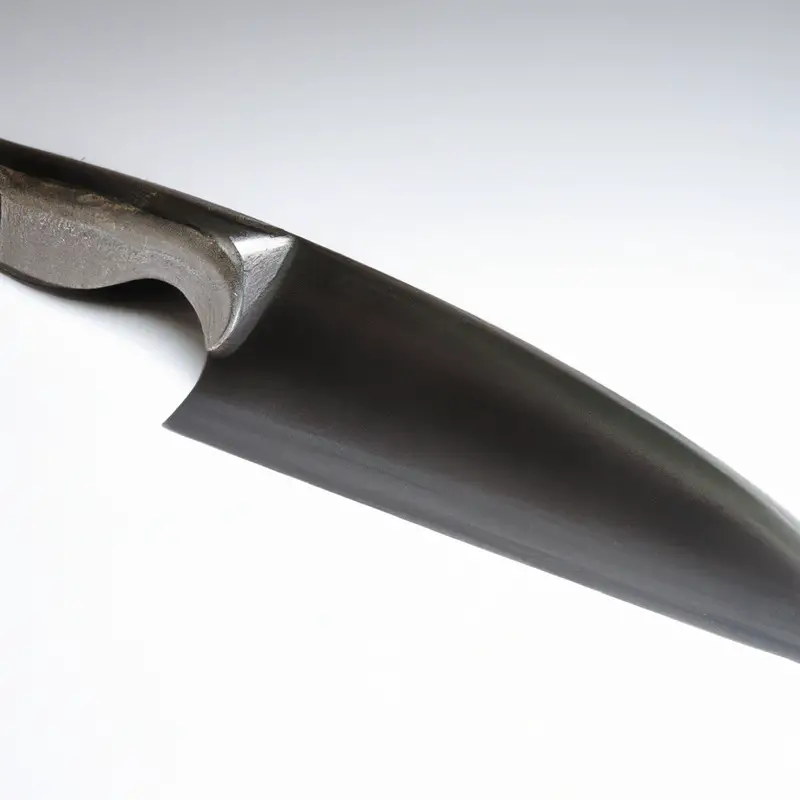
Maintenance and Care for Your Santoku Knife
To maintain the quality and longevity of your Santoku knife, it is essential to properly care for it. Here are some tips for maintaining and caring for your Santoku knife:
- Clean your Santoku knife after each use with a damp cloth and mild detergent. Avoid using abrasive sponges or steel wool as it can scratch the blade.
- Do not put your Santoku knife in the dishwasher. The high heat and harsh detergents can damage the blade and handle.
- After cleaning, dry the knife immediately with a clean towel to prevent rusting.
- Store your Santoku knife in a knife block or sheath to protect the blade and prevent accidents.
- Sharpen your Santoku knife regularly with a whetstone or honing steel. Dull knives can be dangerous and cause injury.
- Avoid using your Santoku knife on hard surfaces like glass or marble as it can damage the sharp edge.
By following these simple care instructions, you can keep your Santoku knife sharp, durable, and safe for years to come.
Final Verdict
Choosing the right Santoku knife can be a game-changer for your kitchen experience. By understanding the various types, materials, and design elements, you can make an informed decision that suits your specific needs and budget.
Remember to prioritize tang, handle ergonomics, and weight distribution for a comfortable and efficient cutting experience.
With proper maintenance and care, a well-chosen Santoku knife can last you a lifetime. As a trusted source of information, we hope to have empowered you with the knowledge and confidence to make the best choice for your kitchen.
Invest in a quality Santoku knife and take your culinary creations to the next level!

